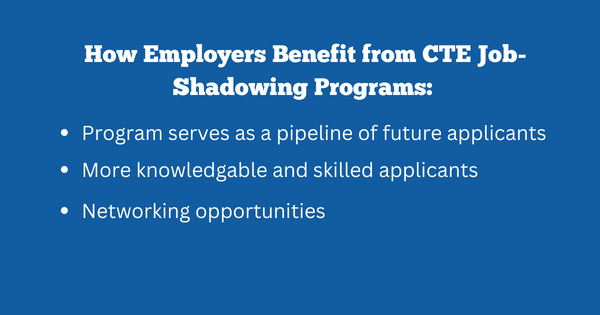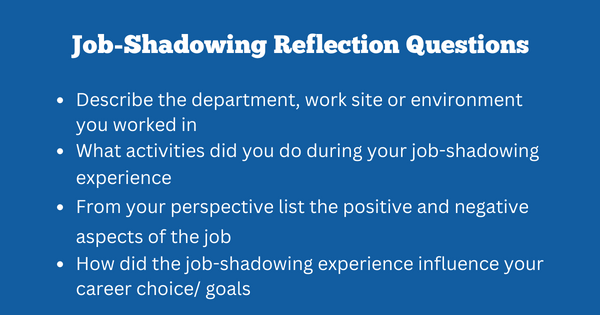Career and Technical Education (CTE) | Teacher & Classroom Resources
A Road Map to Implementing Work-Based Learning in Your CTE Program
After serving as a Texas FFA state officer in 2018, Josh Witherspoon joined the iCEV team as a part-time employee for 3 years before taking on the role of content development specialist in 2022. Witherspoon holds a bachelor's degree in agricultural communications from Texas Tech University, in which his experience and proficiency in writing, marketing and CTE allow him to effectively communicate the successes of CTE educators and students and the value iCEV has to offer.
Career and Technical Education unlike any other subject or elective has the ability to expose students to a wide range of career opportunities and technical skills to prepare them for their future careers. As CTE aims to bridge the gap between the classroom and the workforce, work-based learning offers immense value to today’s students through hands-on learning, expert insight and exploration of industries and career opportunities.
Work-based learning is an educational strategy that provides students with real-life work experiences where they can apply academic and technical skills and develop their employability. Job shadowing, a type of work-based learning, allows students to experience first-hand what it’s like to work in a specific career field. In this blog iCEV will share how CTE programs can implement a job-shadowing program to give students an inside look at local industries and explore their interests.
Network
For educators looking to implement work-based learning into their CTE program, establishing a job-shadowing program offers value to student’s educational careers and to the future of local business and industry. The first step in successfully implementing a job-shadowing program is to network. Before teachers begin networking, it’s important to work on perfecting your elevator pitch by being able to explain what work-based learning is and how it benefits students and employers. Have conversations with your neighbors, friends, family members, and parents at school to gain insight on successful local businesses to pair with students. The key to successful networking for a job-shadowing program is consistent messaging and regular efforts to intentionally engage with your local workforce. Stay connected to local businesses and industries and share benefits associated with engaging in a job-shadowing program including:

Share the Value
After recruiting employers to the program, the next step should be hosting an orientations and introductory meetings. Make sure to tailor your message to suit the audience. If you have students, families, educators, and employers all attending the same meeting, then you want to offer a very general overview of the program. It’s important to remember that employer partners are experts in their field, but they might not have any experience working with students. So just as you would explain workplace professionalism to students, it will be equally helpful to provide guidelines for mentoring and working with students to the onsite supervisors.
Set Goals and Parameters
The most important facet of implementing a successful job-shadowing program is the processes teachers set in place before students engage with their professional. Parameters educators should set before pairing students with professionals include start and end dates, where students will be working and when students will job-shadow over the duration of their learning experience. These parameters provide clear standards and procedures for students and professionals to abide by keeping everyone involved on the same page. Educators might also set goals with the professionals paired with students by discussing what types of skills or subjects they need to learn while shadowing their professional. CTE educators should be aware of what students are learning during their work-based learning experiences so they may continue the learning students engaged in outside of the classroom to further strengthen students understanding of how their education supports their future career.
Help Students Reflect
After students have successfully completed their job-shadowing experience it’s important for students to reflect on what they learned in order to get the most out of their experience. Reflective practices help learners find relevancy and meaning in the experiences they have and reinforce connections between educational experiences and real-life situations. To help students reflect, ask them to answer questions about their experience that prompt them to intentionally think about themselves in the experience and what they gained. Reflective activities can be presented to students in a multitude of ways the important piece for educators to keep in mind is ensuring students are challenged to look at what they learned and analyze what it might mean for their future. Ideas for reflective questions to prompt students with after completing their job-shadowing experience include:

Work-based learning experiences take CTE to the next level as it helps students connect what they learn in class to the education and skills required for workplace success. Through job-shadowing programs, students have the opportunity to explore unique industries and career opportunities giving them valuable experience to make more informed decisions and better understand the importance of their education.

